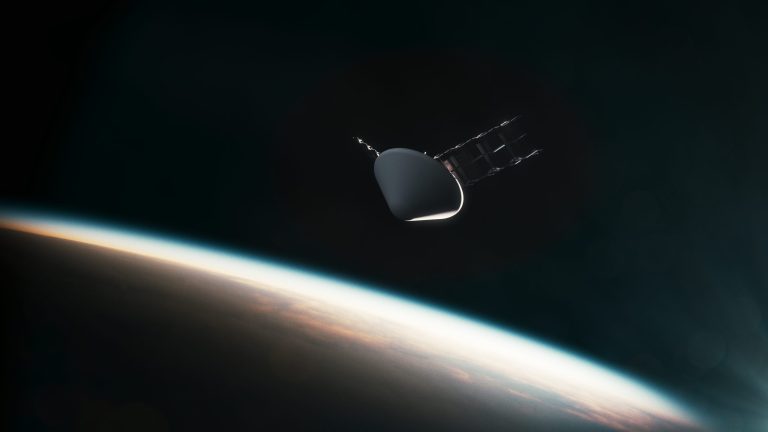TAMPA, Fla. — Denver-based Lux Aeterna emerged from stealth June 25 with $4 million in pre-seed funding to develop a fully reusable satellite slated to launch in 2027, equipped with a heat shield and parachute for safe atmospheric reentry and landing.
The 200-kilogram Delphi demonstrator would then be fitted with a new payload and relaunched to validate a business model aimed at reducing costs while improving sustainability and resiliency, according to Lux Aeterna founder and CEO Brian Taylor.
“While the satellite industry has evolved rapidly, its core infrastructure is still designed to be disposable,” said Taylor, who founded the startup in August after engineering roles at SpaceX, Amazon Project Kuiper and Loft Orbital.
These companies have made major strides in mass-producing satellites that are increasingly capable but ultimately destined to burn up in the atmosphere after their fuel is depleted.
However, Lux Aeterna sees an emerging opportunity among operators seeking more flexibility and control over mission timelines.
Changing the paradigm
“I did a lot of work on how you design a satellite that can be built at six satellites a day,” he told SpaceNews in an interview, recalling his role in structurally qualifying the first stack of 60 spacecraft for SpaceX’s sprawling Starlink broadband constellation.
“That [disposable model] works extremely well when you design the satellite around the payload,” he said.
But for smaller systems of between one and 100 satellites, Taylor sees an opportunity for reusability to take hold.
“It’s really driven by launch costs coming down [and] there is a limitation on how cheap you can make a satellite, even if you have all the advantages of economies of scale, you get to the material cost,” he said.
“So the only way to go less than that is reusability, which [SpaceX’s partly reusable] Falcon 9 showed that pretty well.”
Approaching satellite design with reentry in mind from the start opens the door to new mission architectures and gives customers more economic agility, Taylor said, by tying costs directly to time spent on orbit.
He said that flexibility is particularly attractive for technology developers looking to briefly test systems in space, and in-space manufacturers, where most missions may last anywhere from a single day to six months, depending on the application.
The ability to bring a satellite down early could also significantly reduce costs for missions that don’t go as planned, including savings on hardware, ground station operations and other mission expenses.
According to Taylor, the Department of Defense has also shown interest in the capability, which offers “a new take on tactical response” that avoids reliance on serial production lines vulnerable to supply chain disruptions.
Lux Aeterna plans to fly a customer payload on its demonstration mission in early 2027 but declined to provide details.
Improving reusability
Unlike reentry spacecraft developed for cargo and crew, or the inflatable structures being explored by space agencies, Lux Aeterna plans to use a rigid heat shield as the satellite’s structural bus.
“Instead of adding a heat shield to an existing satellite, we build the entire satellite components and everything around this main structure, which is the heat shield,” Taylor said.
“One of the keys here is that when you launch it, it looks and feels and acts like a satellite. It’s not a capsule, it’s not a space plane.”
A familiar form factor and operational profile help lower the barrier for satellite operators and payload developers, he added.
Delphi is scheduled to launch on a Falcon 9 rideshare mission, and Taylor said future satellites would be slightly larger than the demonstrator but remain compatible with Falcon 9 launches.
The satellite would use onboard propulsion to guide its return to Earth, and Lux Aeterna is working with the Federal Aviation Administration on a flight safety analysis for its first mission.
“The only thing that we’re ready to disclose right now is that we are going to be landing on land,” Taylor said.
The startup currently employs seven people at a 550-square-meter engineering and integration facility in Denver that became operational in December.
Space Capital led the venture’s pre-seed funding round, joined by Dynamo Ventures, Mission One Capital, Alumni Ventures, Service Provider Capital and strategic deep tech angel investors.

